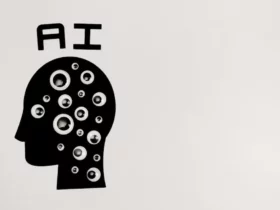Blockchain technology, a digital ledger of transactions, is underpinned by a complex yet fascinating framework of security features. These security mechanisms ensure the integrity and immutability of transactions on the blockchain, making it a trusted technology across various sectors. From finance to supply chain logistics, blockchain is revolutionizing how digital transactions are recorded, verified, and shared, without the need for a centralized authority. This guide will explore the foundational security principles of blockchain technology, including cryptography, consensus algorithms, and smart contracts, providing readers with a comprehensive understanding of how blockchain maintains its secure and decentralized nature.
Cryptography in Blockchain
Cryptography forms the cornerstone of blockchain security, ensuring that every transaction is safeguarded through encryption to prevent unauthorized access. By utilizing advanced cryptographic algorithms to generate both public and private keys, a strong security framework is created to protect transactions. This approach enables users to securely verify their transactions without compromising sensitive information, solidifying blockchain as a robust defense mechanism against potential data breaches and fraudulent acts. The intricate process of cryptographic encryption plays a pivotal role in upholding the integrity and confidentiality of blockchain transactions, establishing a secure environment for users to engage in digital exchanges with peace of mind and confidence.
Consensus Algorithms
In the realm of blockchain technology, consensus algorithms are fundamental to maintaining the integrity and reliability of transactions. These algorithms are designed to facilitate agreement among network participants on the validity of transactions, ensuring that each block in the chain undergoes a process of democratic verification and consensus. Noteworthy consensus mechanisms, such as Proof of Work (PoW) and Proof of Stake (PoS), are pivotal in striking a delicate balance between operational efficiency and security, thereby ensuring the smooth and secure operation of the blockchain network. By leveraging these consensus algorithms, blockchain networks can establish trust, transparency, and robustness in their transaction processes, ultimately contributing to the widespread adoption and scalability of blockchain technology.
Smart Contracts
Smart contracts automate and enforce the negotiation or performance of a contract without human intervention. These programmable agreements use mechanisms like Hashlock for enhanced blockchain security, ensuring the conditions of smart contracts are met securely and efficiently before any transaction is executed. These self-executing contracts with the terms of the agreement directly written into lines of code are stored and replicated on the blockchain. This not only increases efficiency by removing manual processes but also significantly enhances security by making the contracts tamper-proof and immutable.
Decentralization in Blockchain Technology
At its core, blockchain technology operates in a decentralized manner, which means it is not under the control of a single entity but is spread across various nodes or computers. This decentralization plays a vital role in enhancing security by removing a central point of failure, thereby making it extremely challenging for malicious actors to compromise the integrity of the blockchain. Moreover, decentralization fosters transparency and openness within the blockchain ecosystem, establishing a network based on trust and consensus among participants.
Public vs. Private Blockchain Networks
The differentiation between public and private blockchains holds significant implications for security measures. Public blockchains, as seen in cryptocurrencies such as Bitcoin, are accessible to all, emphasizing transparency and anonymity. In contrast, private blockchains restrict entry to chosen participants, establishing a controlled setting that can enhance security and operational efficiency, particularly within enterprise applications. This distinction in blockchain types underscores the diverse approaches taken to address security concerns in varying contexts.
Enhancing Security Through Encryption
Encryption plays a pivotal role in strengthening the security framework of blockchain technology. By converting data into an incomprehensible format for unauthorized parties, encryption plays a crucial role in preserving the immutability and confidentiality of the information contained within each block. This sophisticated security mechanism not only provides protection against external threats but also ensures that data can be accessed or decrypted exclusively by entities with the necessary decryption key. In doing so, encryption further underlines the fundamental principles of privacy and security in the rapidly evolving digital landscape of today.

In wrapping up our guide to the foundations of blockchain security, it’s clear that the amalgamation of cryptographic encryption, consensus mechanisms, smart contracts, decentralization, and the distinction between public and private networks form the bedrock of blockchain’s robust security framework. These elements not only ensure the integrity, transparency, and immutability of transactions but also significantly mitigate the risks associated with digital transactions and record-keeping. By harnessing these security foundations, blockchain technology provides a secure, efficient, and decentralized platform, paving the way for innovative applications across various industries. Moving forward, as blockchain technology continues to evolve, so too will its security measures, further strengthening its position as a linchpin of digital trust and security in the future.









